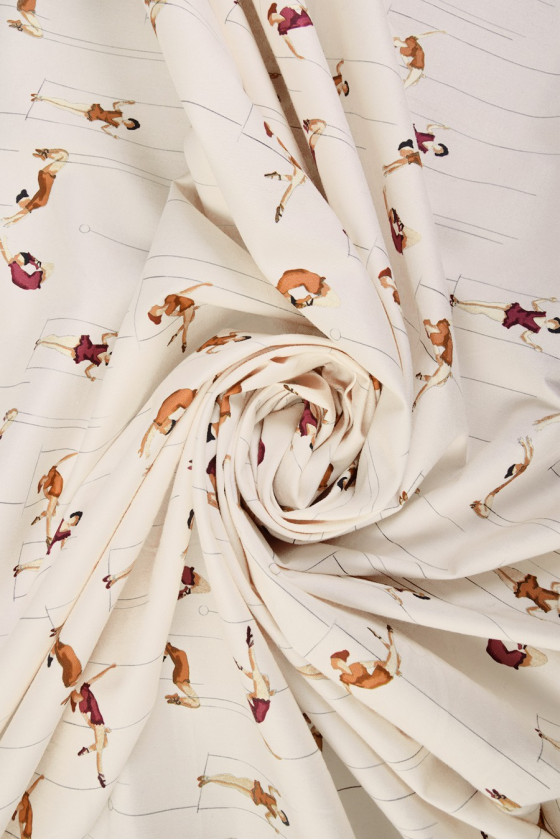- today
- perm_identity Izpol
- label Fabric
- favorite 0 Likes
- remove_red_eye 41534 Visits

Cotton comes from trees and shrubs that are found in the wild on almost every continent. The best comes from countries where there is good sunlight, moderate rainfall and no frosts. For harvesting, it ripens at the time of the flowering of its flowers and the appearance of bags full of seeds.
Although in many countries the machine-made method of harvesting cotton has been adopted, in Asia it is still most often harvested by hand. Then the fibers are separated from the seeds. The fibers are formed into bales and transported to a spinning mill, where they are combed out. They gain softness and elasticity. Then it is spun in a specialized plant, sometimes still by hand on looms. Cotton seeds that remain after the production process are used for food purposes. Why are we talking about all this?
Cotton is a natural and functional material
To emphasize that cotton comes from a natural raw material. It is not a synthetic or artificial fabric, and thus has qualities that are attributed only to natural fabrics. It is soft and comfortable to wear. It is easy to clean and also manifests certain health-promoting properties. This is one of the most popular materials for the production of clothes or cloths. It is also applicable in industry:
- pharmaceutical, for the production of dressings and other hygienic materials,
- and even to fishing nets,
- coffee filters,
- oil production,
- dollar bills.
It owes its popularity to the relatively inexpensive process of sourcing and production, as well as the advantages that we will tell you about.
Check out our fabrics: Cotton and Bathyst
Cotton – a material with extraordinary properties
Cotton is a very hygroscopic material. This means that it effectively absorbs moisture, which is important in the summer when we sweat intensively. Interestingly, it does not give the impression of being wet, even if it absorbs moisture up to 25% of its weight. Depending on how thick or thin cotton material we order, it will retain heat well. Thinner fabrics turn out to be better for the summer, because they make clothes airy. Thicker cotton is a fabric for the winter, when you need to protect yourself from the cold. .
Cotton is resistant to stretching and high temperature. This makes it graceful in the wash, but also very hygienic – at high temperatures most germs die. It is a pleasure to wear, because it is soft, smooth and pleasant to the touch. It is also safe for the skin. Cotton does not sensitize, does not cause itching or biting - the fabric is ideal for children. Great material for children's clothes – cotton is often used in the production of clothes for the youngest!
Check out our categories such as: Plain Cotton and Printed Cotton
Cotton clothes are durable and comfortable
Despite the fact that cotton is a fabric slightly less resistant to creasing than others, it is very durable. Properly made of it clothes last for years and do not deteriorate. Due to the fact that it is elastic, it adheres well to the body, it is worn comfortably and does not restrict movement. It allows you to emphasize the advantages of the figure, which is especially useful in the case of T-shirts and underwear. An unusual advantage of cotton fabrics is resistance to odors. Not only does it pass with great resistance with odors, but it also releases from them very quickly. A visit to a fat-scented pub is therefore not a problem in the case of cotton clothes. For creasing problems, in turn, the solution is properly performed ironing and cleaning.
How to wash, iron and dry cotton? Cotton fabric – tips
Cotton, due to its natural structure, requires proper care. Do not put damp clothes in a closet or suitcase so that they do not become moldy.
Cotton pressing – what temperature to set the iron?
However, it is resistant to temperature – it can be ironed even at 150-180 ° C. It goes down faster if it is ironed with steam.
Cotton washing – in how many degrees?
Cotton is also relatively easy to wash. It is not afraid of its temperature of 90° C and higher. Despite this, it is worth lowering the washing temperature slightly, to about 60 ° C, if the cotton is dyed. It can be spinned.
Drying cotton clothes
When drying, remember not to leave it crumpled and rather not in full sun. Prolonged exposure to the rays can damage it.





